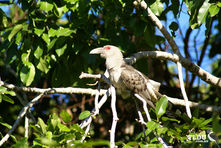
Shoppers Feedback:
Jan 17, 2017
Hello Ros,
I have now paid the invoice, but I would like to write to you just to say a big THANK YOU for getting me the Penguin!
The ChatterMate Penguin became a nice memory for me when I was in New Zealand, and I am so greatful to you for arranging so that I could have it! :-)
Thank you so much!!!!!!!!!!!
Regards,
Malin
Hi Ros,
Many thanks for your very kind email. I really appreciate your prompt reply!
I appreciate your advice regarding the decorations and customs. These are a gift for my daughter’s exchange student family so when she returns home on the weekend I will show her and see if she loves them as much as I do!
Thanks so very much again - I am truly grateful for your kind assistance.
Kind Regards
Bernadette
Ros,
Thanks again for the great customer service. It's a refreshing change!
Best regards,
Trevor
Hey Roz,
Thank you for your emails. Just loved my first order. The cute little Aussie bush critters are going to be used for an office Christmas decoration. My colleagues also liked them and talked about making an order to your site. I'll send you a photo when completed.
I'll be ordering more to send to my daughter's host family in America.
Fabulous service from you.
Kind regards,
Michelle
Thankyou. Order arrived today. One very happy grandson with his new beastly binoculars.
Regards,
Irene
- Home
- Wild Wonders
- Shop
- Aromas of Australia
- Australian Made
- Books
- Book Marks
- Christmas Decoration Sale
- Christmas Decorations
- Clocks
- Drink Holders
- Garden & Outdoor
- Gift Wrapping & Cards
- Home & Giftware
- Jewellery
- Keyrings
- New Products
- Pencils & Pen Holders
- Photo Frames
- Plush Toys
- Plush with Sound
- Sheepskin Rugs
- Stationery
- Stone Carvings
- Toys & Games
- Travel Goods
- Wedding
- Wild Figurines
- Wildlife Safety Products
- Wind Chimes
- Wine Charms
- View All Products
- Wildlife
- Australiana
- Explore
- Contact Us

Quick Facts
| Length: | 62 cm |
| Height: | - |
| Weight: | 611 grams |
| Colour: | Grey, darker on back and wings, long barred tail. |
| Habitat: | Tall open forests |
| Food: | Native figs, fruits and some seeds, insects and baby birds |
| Predators: | - |
| Status: | Not Present in SA, VIC & TAS. Secure in all other states and territories of Australia. |
Apart from the Channel-billed Cuckoo's large size, its massive pale, down-curved bill, grey plumage (darker on the back and wings) and long barred tail make it difficult to confuse it with any other bird. In flight the long tail and long wings give the bird a crucifix-shaped (cross-shaped) silhouette. Young Channel-billed Cuckoos have more mottled buff, brown and grey plumage. Although they are not nocturnal birds (night birds) in the strict sense, Channel-billed Cuckoos are notorious for calling all night long during the breeding season. This species is sometimes known as the Storm-bird or Stormbird.
The Channel-billed Cuckoo migrates to northern and eastern Australia from New Guinea and Indonesia between August and October each year. The birds leave Australia in February or March.
The Channel-billed Cuckoo is found in tall open forests, usually where host species occur.
The favoured foods of the Channel-billed Cuckoo are native figs and native fruits, though some seeds, insects and even baby birds are also taken. The birds take figs from the tree with their massive bills.
The Channel-billed Cuckoo is the largest parasitic cuckoo in the world.
The Channel-billed Cuckoo lays its eggs in the nests of the Australian Magpie, the Pied Currawong and members of the crow family. Unlike many other cuckoos, the young birds do not evict the host's young or eggs from the nest, but simply grow faster and demand all the food, thus starving the others. Often the adult female will damage the existing eggs in the nest when she lays her own and she may even lay more than one egg in a single nest.
Last Updated: Wednesday 17th July, 2013
BUSH e-TELEGRAPH
Signup for our monthly newsletter the "e-Telegraph"
Quick Links
Home | The Beginning | About The Land Down Under | Wild Wonders | Advertise on Wild Wonders | Christmas Decoration Sale | Christmas Tree Decorations | Drink Holders | Plush with Sound | Stone Carvings | Wildlife Wine Charms | Freebies | Australian Wildlife | Help Our Wildlife | Australiana | Photo of the Month | Explore The Land Down Under | Contact Us | Legal Notices

